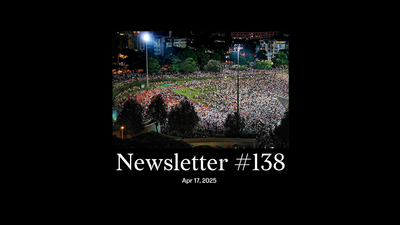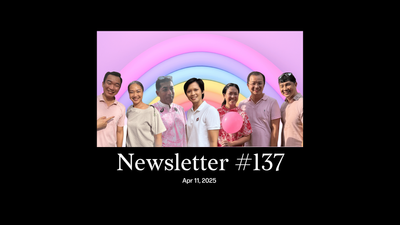Dear reader,
Save the date! Jom’s launch party will be held from 5-8pm, December 2nd Friday. Our core team will be there, so will many contributors. We’d love to meet you in person. Jom is going to have many more parties in the future, but we’ll only ever have one launch. More details next week.
Today we’ve published Jom’s second profile, on Chew Kheng Chuan, KC, Singapore’s first-ever undergraduate at Harvard (1978). His is a fascinating story, with numerous, varied experiences that illustrate Singapore’s development over the past few decades.
KC was on the board of The Substation for 26 years, and was its last chairman before the government took over its Armenian Street premises last year. KC talks about those last two years of negotiations with the National Arts Council and Edwin Tong, minister for culture, community and youth, and the thought processes that led to its closure.
Yet he is perhaps most (in)famously known as one of the 22 people that Lee Kuan Yew arrested and detained without trial in 1987, claiming they were “Marxist conspirators” plotting to overthrow the state. The government has yet to offer conclusive proof of the plot.
What had KC done to get on Lee’s radar? He talks about a fateful year he spent in London with Tharman Shanmugaratnam, Singapore’s senior minister, and Yeoh Lam Keong, former chief economist at GIC, a sovereign wealth fund, two of his buddies who were then studying at the London School of Economics.
London in the late 70s was a hotbed of activism for Malaysians and Singaporeans. KC, Tharman and Lam Keong, steeped in leftist ideals, wrote fervently, attended protests outside the Singapore Embassy, and were part of a study group with Tan Wah Piow, an exiled dissident.
I’m glad KC shared all these stories with Jom, as well as a photo of the three strapping lads in London. Listening to him, however, I did feel a bit mournful about the loss of student activism over the decades, gone by the time I was in college, late 1990s. One can only imagine what it must have been like—the fervour, the passion—among Malayans in the 1950s-60s.
This profile also gives me a chance to share Jom’s approach to profiles. How should we write critically about Singaporeans, especially our friends?
In much traditional journalism, writers keep a sufficient distance from their subjects because proximity is seen as a liability. They must be detached, so it goes, in order to produce neutral, honest reportage.
This certainly applies to news and shorter analyses. With deep profiles, writer and subject invariably become closer.
Yet in Singapore, because of our size and few degrees of separation—global city cum kampung—this closeness is intensified.
Though we’ve only known each other for a few years, KC is a friend. So too Shao Wei, his second kid, whom I actually met first, and Li Shan, his partner (and fellow writer), whom I first met over a decade ago (before they were dating).
Can I possibly write critically about KC without pissing off somebody I like?
There are different forms of self-censorship in Singaporean journalism, and this is one: because we are so small, and individual groups, like theatre people, are so networked, critics worry about irritating others to the detriment of their own careers.
This is one structural reason why criticism in Singapore is relatively immature. It’s something Jom, in our own small way, is trying to change.
It helps that my colleagues are ever willing to point out my blind spots. I chatted with one of our editors midway through my 14 hours of conversations with KC. “You must ask him about The Substation!!!” this arts-loving person implored. I hadn’t realised that there was still some lingering doubt about KC’s role in that brouhaha.
Over the past few days, one co-founder urged me to think again about the level of criticism we should aim for. “Isn’t he contradicting himself here?” another asked. In a sense he was, and so I described it more clearly. These are the ways we try to ensure that we can write about people close to us yet with enough of a critical eye.
Is Jom pushing the bar of criticality fast enough? Ultimately that’s for you, the reader, to decide, and after you’re done with KC’s piece, I’d love to hear your thoughts. Just click reply.
Jom baca,
Sudhir Vadaketh
Editor-in-chief, Jom
If you've enjoyed our newsletter, please scroll to the bottom of this page to sign up to receive them direct in your inbox.







